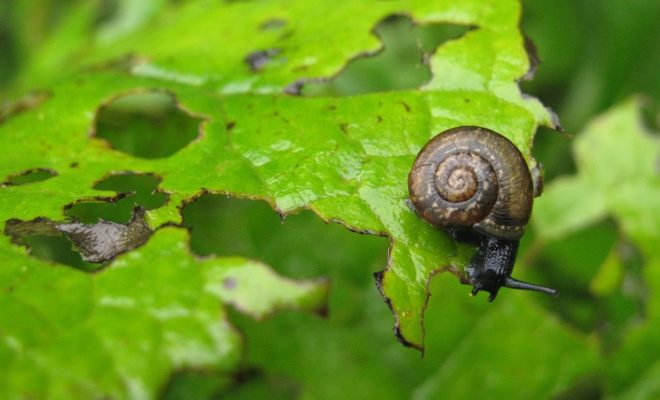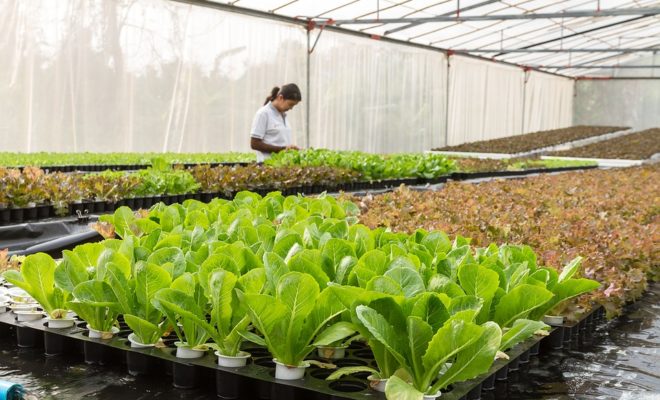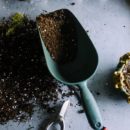GARDEN PESTS.

On the off chance that we could cultivate with no obstruction from the nuisances which assault plants, then to be sure planting would be a basic matter. Be that as it may, all the time we should keep an eye out for these little adversaries little in size, yet colossal in the ruin they make.
As human ailment may frequently be forestalled by empowering conditions, so vermin might be kept away by strict garden cleanliness. Stores of waste are cabin places for the reproducing of bugs. I don’t think a manure heap will do the damage, yet unkempt, uncared-for spots appear to welcome inconvenience.
There are sure serves to holding bugs down. The steady blending up of the dirt by worms is a guide in keeping the dirt open to air and water. A large number of our regular flying creatures sustain upon bugs. The sparrows, robins, chickadees, knoll songbirds and orioles are all cases of winged animals who help along these lines. A few creepy crawlies feast upon other and hurtful bugs. A few sorts of ladybugs benefit this deed. The ichneumon-fly aides as well. Also, amphibians are ponders in the quantity of creepy crawlies they can devour at one dinner. The amphibian merits extremely kind treatment from every one of us.
Every plant specialist ought to attempt to make her or his garden into a place appealing to flying creatures and amphibians. A decent perch room, grain sprinkled about in early spring, a water-place, are solicitations for winged creatures to remain a while in your garden. On the off chance that you wish amphibians, repair things for them as well. Amid a hot summer day a frog likes to rest in the shade. By night he is prepared to go forward to eat yet not to murder, since amphibians incline toward live sustenance. How might one “”repair”” for frogs? All things considered, one thing to do is to set up a withdraw, calm, dull and sodden. A couple stones of some size underneath the shade of a bush with maybe a covering of soggy leaves, would seem fine to a frog.
There are two general classes of creepy crawlies known by the way they do their work. One kind worries the plant truly taking bits of it into its framework. This sort of creepy crawly has a mouth fitted to do this work. Grasshoppers and caterpillars are of this sort. The other kind sucks the juices from a plant. This, in some ways, is the most exceedingly awful sort. Plant lice have a place here, as do mosquitoes, which go after us. All the scale creepy crawlies secure themselves on plants, and suck out the life of the plants.
Presently would we be able to battle these chaps? The biting colleagues might be gotten with toxin splashed upon plants, which they bring into their bodies with the plant. The Bordeaux blend which is a toxin showered upon plants for this reason.
In the other case the main thing is to assault the bug coordinate. So certain bug sprays, as they are called, are showered on the plant to fall upon the bug. They do a savage work of assaulting, in somehow, the body of the creepy crawly.
At times we are highly bothered with underground creepy crawlies at work. You have seen a garden secured with ant colonies. Here is a cure, yet one of which you should be watchful.
This question is always being asked, ‘How might I tell what bug is doing the ruinous work?’ Well, you can tell mostly by the work done, and incompletely by observing the bug itself. This last thing is not generally so natural to achieve. I had cutworms one season and never observed one. I saw just the work done. In the event that stalks of delicate plants are cut tidy up be almost certain the cutworm is abroad. What does he resemble? All things considered, that is a hard question since his family is a huge one. Should you see at some point a grayish striped caterpillar, you may know it is a cutworm. But since of its propensity for resting in the ground amid the day and working by night, it is hard to notice one. The cutworm is around ahead of schedule in the season prepared to cut the blossom stalks of the hyacinths. At the point when the peas go ahead somewhat later, he is prepared for them. A decent approach to close him off is to put paper collars, or tin ones, about the plants. These collars ought to be around an inch far from the plant.
Obviously, plant lice are more basic. Those we see are frequently green in shading. Be that as it may, they might be red, yellow or cocoa. Lice are sufficiently simple to discover since they are continually sticking to their host. As sucking creepy crawlies they need to stick near a plant for sustenance, and one is almost certain to discover them. Be that as it may, the gnawing bugs do their work, and afterward go stow away. That makes them a great deal more hard to manage.
Rose slugs do incredible harm to the flower brambles. They eat out the body of the leaves, so that simply the veining is cleared out. They are delicate bodied, green above and yellow underneath.
A creepy crawly, the striped insect, assaults youthful melons and squash takes off. It eats the leaf by riddling out openings in it. This insect, as its name suggests, is striped. The back is dark with yellow stripes running the long way.
At that point there are the slugs, which are garden bugs. The slug will eat up any garden plant, whether it be a blossom or a vegetable. They lay loads of eggs in old trash stores. Do you see the benefit of tidying up garbage? The slugs accomplish more mischief in the garden than some other single creepy crawly bug. You can find them in the accompanying way. There is a trap for conveying them to the surface of the ground in the day time. You see they rest amid the day subterranean. So simply water the dirt in which the slugs should be. How are you to know where they are? They are very prone to stow away close to the plants they are nourishing on. So water the ground with some pleasant clean lime water. This will irritate them, and up they’ll jab to see what the matter is.
Adjacent to these most normal of vermin, nuisances which assault numerous sorts of plants, there are extraordinary irritations for uncommon plants. Demoralizing, is it not? Beans have vermin of their own; so have potatoes and cabbages. Indeed, the vegetable garden has numerous tenants. In the bloom plant lice are extremely irksome, the cutworm and the slug have a decent time there, as well, and ants frequently get exceptionally various as the season propels. Be that as it may, for genuine demoralizing bug inconveniences the vegetable garden takes the prize. On the off chance that we were going into organic product to any degree, maybe the vegetable garden would need to leave for the natural product cultivate.
A typical bug in the vegetable garden is the tomato worm. This is a vast yellowish or greenish striped worm. Its work is to eat into the youthful natural product.
An extraordinary, light green caterpillar is found on celery. This caterpillar might be told by the dark groups, one on every ring or portion of its body.
The squash bug might be told by its cocoa body, which is long and thin, and by the repulsive odd our from it when executed. The potato bug is another kindred to pay special mind to. It is a scarab with yellow and dark stripes down its dried up back. The little green cabbage worm is a flawless irritation. It is a little caterpillar and littler than the tomato worm. These are maybe the most well-known of garden irritations by name.









